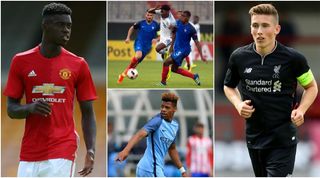Not-so-brilliant Oranje: Where did it all go wrong for the Netherlands?
The Dutch's failure to qualify for the expanded Euro 2016 raised more than a few eyebrows. What happened to the former masters of Total Football? And how can they turn things around?
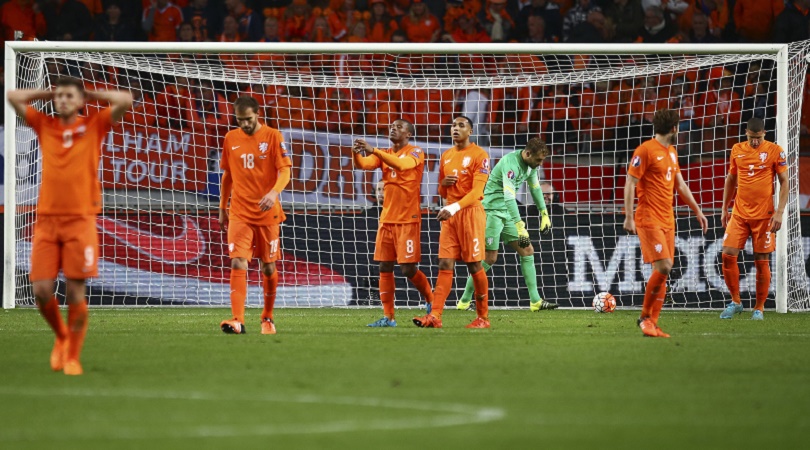
The Dutch would normally have been expecting to throw themselves a fantastic orange party In June. But there was no bunting on the streets of Amsterdam this year. The whole country’s pubs, shops, homes and public spaces were bereft of football-related decoration.
They may have to get used to it.
The Netherlands failed to qualify for Euro 2016 – a tournament which featured half of the professional teams in Europe – and face a struggle to reach the World Cup in Russia, too, having been drawn in a tough group alongside France and Sweden. It’s still hard to take in the suddenness of the decline undergone by the nation of Johan Cruyff, Dennis Bergkamp and Total Football.
Remember, the Dutch reached the final of the 2010 World Cup and finished third in the 2014 edition. Yet, after impressing on the global stage, their abject attempt to qualify for this summer’s continental tournament in France yielded just one point from six games against Iceland, Turkey and the Czech Republic as they finished fourth in their group of six. Fourth!

Sigurdsson helps Iceland win in the Netherlands
No quick fix
Over the last couple of years, Holland’s latest – perhaps last – generation of greats, including Wesley Sneijder and Arjen Robben, faded while no new stars emerged to replace them
The change was reflected in the fortunes of Robin van Persie. Two years ago in Brazil, he leapt like a salmon to head in one of the most daring and exquisite goals in World Cup history, inspiring a 5-1 victory over Spain, the reigning champions. Last October, with his team needing to beat the Czechs in their final game to have even a slim hope of making it to the Euros, he gave the visitors a three-goal lead by stooping to nod a free-kick into his own net.
Get FourFourTwo Newsletter
The best features, fun and footballing quizzes, straight to your inbox every week.
True, a tidy young Netherlands team beat a meek, experimental England outfit 2-1 in a friendly at Wembley four days after the death of Cruyff in March. But the malaise runs deep.
So, can we expect the Dutch to bounce back soon? “I don’t think so,” says Henk Spaan, doyen of Dutch football writers and editor of the influential magazine Hardgras. “The future looks bleak.”
Part of the problem is generational. Over the last couple of years, Holland’s latest – perhaps last – generation of greats, including Wesley Sneijder and Arjen Robben, faded while no new stars emerged to replace them.
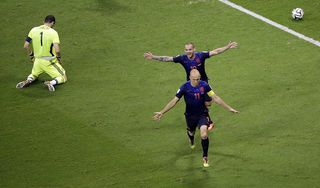
Footballers peak in their late twenties. The Netherlands found themselves with a squad of players either too old or too young. In some qualifying matches they fielded no players at all between the ages of 25 and 31.
Talents such as the intelligent but limited Daley Blind, the intermittently terrific Georginio Wijnaldum and the lately disappointing Memphis Depay are not yet fully developed and look just short of world class.
Young hopes
Impressive performances by club and national teams in youth tournaments show that the Netherlands still have some of the best youngsters around
Just behind them is another crop of exciting youngsters. Timothy Fosu-Mensah, formerly of Ajax, is coming along well at Manchester United having turned 18 this year. And there are real prospects emerging at PSV, Ajax and AZ Alkmaar. Check out the showreels of promising teenagers Donny van de Beek and Abdelhak Nouri, both of Ajax, or PSV’s Steven Bergwijn and Kenneth Paal. Among the strikers there are promising 21-year-olds Anwar El Ghazi and the muscular Vincent Janssen of Tottenham, who scored a penalty against England at Wembley before setting up the winner.
Moreover, impressive performances by club and national teams in youth tournaments show that the Netherlands still have some of the best youngsters around.
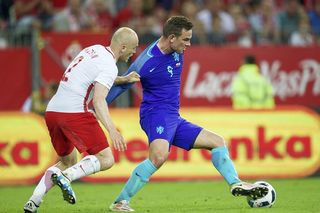
The problem is that Dutch prospects often fail to fulfil their promise. In recent years Eljero Elia, Ibrahim Afellay and Ismail Aissati, among others, were hailed as serious talents but failed to become superstars. Depay, seemingly so disgruntled at Manchester United that he deleted all pictures of his club colleagues from his official Instagram account, is in danger of heading the same way.
In any case, it will be four or five years before we know whether the current crop is up to the standards of old. That could prove a long wait.
It’s hard to imagine the Netherlands ever again being in as happy a situation as they were in 1988, when, as champions of Europe, they had four of the top five players in the world: in Ballon d’Or voting, Marco van Basten, Ruud Gullit and Frank Rijkaard made up the top three, with Ronald Koeman ranked fifth.
Spaan says: “We don’t have those kind of players any more. I’m still convinced that the training of boys from 10 to 18 is unbelievably good in Holland. Teams such as Manchester United and Arsenal watch Dutch youth players very closely. But something goes wrong between 18 and 21. Our coaches don’t have the ability to transform the biggest talents of Europe into full-grown senior players.”
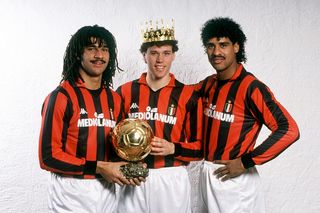
Great innovators
In the 1960s and ’70s the Dutch, led by coach Rinus Michels and on-field genius Cruyff, more or less invented the modern game
Part of the problem, Spaan suggests, is that players go abroad too early – usually around the age of 20 – before they’ve had the chance to mature. Van Basten, Bergkamp and Gullit were all in or approaching their mid-twenties when they moved to Italy. Ruud van Nistelrooy was 25 when he arrived in England. Such stars were also beneficiaries of playing with older, more experienced players, and managed to retain their distinctively Dutch approach when they departed to play in another country.
Meanwhile, the Dutch are caught in a trap that afflicts many great innovators. They face a similar problem to that faced by Britain in the late 19th century. A hundred years earlier, British pioneers had created the industrial revolution, which led to global dominance. But other countries copied and improved upon British methods and subsequently overtook the ‘workshop of the world’.
In the 1960s and ’70s the Dutch, led by coach Rinus Michels and on-field genius Cruyff, more or less invented the modern game. Their high pressing, positional flexibility, creativity and technical virtuosity showed the world how the game could be played. Now the world has learned, and that advantage is long gone.
Ajax won the European Cup three years in a row between 1971 and 1973 and the Oranje were the best team at the 1974 and 1978 World Cups, twice losing to the hosts in the final (West Germany and Argentina respectively).
The national team failed to win a trophy but their revolutionary approach paved the way for the future. In the following three decades the tiny nation became a production line for world-class talent, especially at Ajax. The Netherlands won Euro 88, and Dutch contingents helped Milan and Barcelona to rule Europe at club level. In the 1990s, the generation of Dennis Bergkamp, Clarence Seedorf, Edgar Davids and the De Boer brothers took over. Then came the era of Robben, Sneijder and Van Persie.
Coaching shortcomings
Louis van Gaal was sacked by Manchester United following an underwhelming two years, and Guus Hiddink, after finishing his caretaker role at Chelsea, is a spent force
Yet the seeds of Dutch distress were already being sown, as rival coaches, clubs and national federations began to adopt their methods. These days, almost every successful team plays with some elements of the Netherlands’ style.
The death of Cruyff at the age of 68 in March this year produced an extraordinary wave of nostalgia and mourning in the country. Now the era of great Dutch coaches also appears to be passing. Louis van Gaal was sacked by Manchester United following an underwhelming two years, and Guus Hiddink, after finishing his caretaker role at Chelsea, is a spent force.
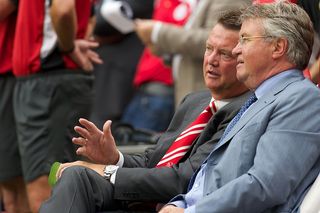
Apart from Ronald Koeman, none of the stars of the late ’80s and early ’90s have become successful coaches. Marco van Basten, national team coach between 2004 and 2008, has suffered from stress and walked away from the AZ job last year when he felt he was no longer up to the task. Frank Rijkaard, who took his nation to the semi-finals of Euro 2000 and guided Barcelona to Champions League glory in 2006, has also turned his back on coaching.
Of the stars of the nineties, Frank de Boer and Phillip Cocu have done well at Ajax and PSV respectively, but are untested outside their home country – although De Boer at least has a chance to prove himself overseas at Inter this term. Bergkamp has no desire to run a big team, and Danny Blind is in charge of the national team almost by default.
Meanwhile, the ‘Dutch School’ itself is suddenly looking obsolete. Coaching contracts, from the national team down to amateur sides, often stipulate that playing style must conform to old attacking principles. But the game has changed.

Dutch football needs De Boer to be a success at Inter
Outdated methods?
A core principle since their 1970s heyday has been the use of 4-3-3 with advanced wingers – Cruyff preached this orthodoxy until the day he died. However, what was once daring, fresh and flexible hardened into stale dogma long ago.
Using specialist wingers is now making increasingly less sense. In the past, leaving wingers far upfield was a reliable way to push back the opposition, because no full-back could run up and down the pitch continually. But modern full-backs are much fitter than their predecessors. Old-fashioned wingers “ahead of the ball”, as the Dutch say, will leave their team outgunned in midfield. Then again, the success of Dutch-influenced, possession-loving, winger-blessed teams such as Bayern Munich and Barcelona suggest the positional game can still be lethal if done well.
Does the traditional Dutch preference for keeping possession and building from the back still make sense, too? The Netherlands have long regarded defensive football, especially its most extreme manifestations in Italian catenaccio or the teams of Jose Mourinho, as essentially immoral and beneath their dignity. But sides such as Leicester City and Atletico Madrid – or, indeed, the much-criticised counter-attacking tactics of Van Gaal and Bert van Maarwijk in Holland’s previous two World Cup appearances – have shown the benefits of playing on the break.
The Dutch passing game has also atrophied. Their great teams of the ’70s and ’80s loved to keep the ball, but they rarely did so in a sterile fashion. The lethal, probing ‘ball circulation’ of Van Gaal’s Champions League-winning Ajax side in 1995 represented an updating of that concept. Possession used to be a tool for dominating opponents.
In both the national team and the Dutch leagues, though, possession now appears to be an end in itself; players exchanging endless short passes in front of opponents instead of fast, driving, aggressive attacks. Cruyff would often denounce slow play and a lack of risk-taking, and his point was borne out by the far more effective tiki-taka or German variant of the Dutch game that won the previous two World Cups and European Championships.
Technique, technique, technique
These days it is Spain, Belgium, Germany and France who produce the type of dynamic, creative, technical players once considered to be ‘typically Dutch’
The most intractable problem is that the Dutch have simply stopped producing football geniuses. These days it is Spain, Belgium, Germany and France who produce the type of dynamic, creative, technical players once considered to be ‘typically Dutch’.
For decades the Netherlands mocked Belgium’s lack of football brilliance. Now the roles are reversed. The Dutch look across the border with a mixture of awe and envy, and wonder why their players aren’t a patch on Eden Hazard or Kevin De Bruyne.
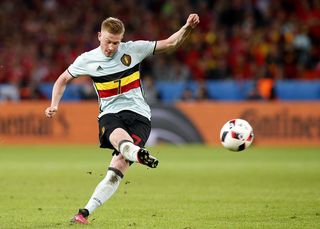
It was largely to remedy this state of affairs that Johan Cruyff initiated his ‘revolution’ at Ajax in 2011. His chief ally at the time was Dennis Bergkamp, who had identified the problem when he returned to his boyhood club in 2008, saying: “Things were really going downhill, but no one seemed to notice – or perhaps they didn’t want to see.” Ajax’s young players at the time tended to be “good, tidy, rather technical players”, but they weren’t particularly special, creative or explosive.
Cruyff’s battle for control led to a period of conflict unprecedented even by Dutch standards, with a court case, allegations of dirty tricks and a trail of broken friendships. The old board, full of the kind of ‘suits’ he regarded as unqualified to run the game, soon departed. However, there was also a conflict between Cruyff acolytes and a faction who were supporting Van Gaal.
Eventually Cruyff won – because he’s Cruyff – and many of the club’s youth coaches were sacked, with a new management structure, involving a ‘technical heart’, put in place. The idea was to turn Ajax into the equivalent of an Oxford college or a Japanese violin school: a hothouse to nurture exceptional talents.
But being a great footballer or manager doesn’t necessarily mean you have the skills to run a big modern football club. Rather like the comrades of the Russian and French revolutions, the new rulers fell out amongst themselves.
Tensions came to a head a year ago over the signing of Heerenveen midfielder Daley Sinkgraven. On one side, Cruyff and Wim Jonk, the head of the youth academy, argued passionately that the club should promote one of their own. With equal vehemence, Dennis Bergkamp, Marc Overmars and first-team coach Frank de Boer insisted that dogma had to take a back seat when the team needed some reinforcing with talent from outside.
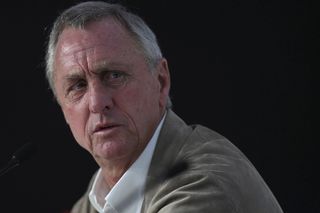
The power struggle was finally resolved late last year, when Jonk was sacked and Cruyff walked away after falling seriously ill. One unintended consequence of the turbulence at Ajax was that some of its former teachers ended up strengthening their rivals. Thanks to its rich history, Ajax continues to attract the country’s best young talents – but AZ, Feyenoord and PSV are structurally stronger than they were.
What happens next?
It is tempting to see the Dutch football crisis as a reflection of the changing state of the country
So: what now? With France and Sweden standing in the way of a World Cup place in Russia, nobody in the Netherlands is optimistic about the national team in the short or medium term, although the return of Roma midfielder Kevin Strootman after a long injury absence should help.
In the longer term, nobody knows what comes next for the Netherlands. It is tempting to see the Dutch football crisis as a reflection of the changing state of the country.
The birth of Total Football in the 1960s reflected the extraordinary burst of cultural energy and creativity that made ultra-liberal Amsterdam the coolest city in Europe. In the 1970s, the country’s colourful Prime Minister Joop den Uyl believed the Dutch could teach the world how to run its affairs. Indeed, the official foreign policy was Nederland gidsland – literally ‘Netherlands: guiding country’.
These days, a very different mood prevails. Politically, the Netherlands is divided, fearful and inward-looking, and its best-known politician is Geert Wilders, an anti-Muslim populist with an odd haircut – essentially a Dutch version of Donald Trump.
Meanwhile, the KNVB (the Dutch FA) is taking its own steps to respond to the crisis. Their aim is to follow the examples of France and Germany, who revamped their systems profoundly after humiliations in the early 1990s and early 2000s respectively.
Henk ten Cate, the former Ajax and Chelsea coach, is heading an inquiry into what can be discovered from the best methods of other countries – Germany and France in particular. The KNVB hope to use Ten Cate’s findings to launch a new masterplan later this year. It is ambitiously dubbed ‘Dutch School 2.0’.
For decades, the Dutch saw themselves as teaching the world how to play football. Now it seems they will have to learn from others.
This feature originally appeared in the July 2016 issue of FourFourTwo. Subscribe!

